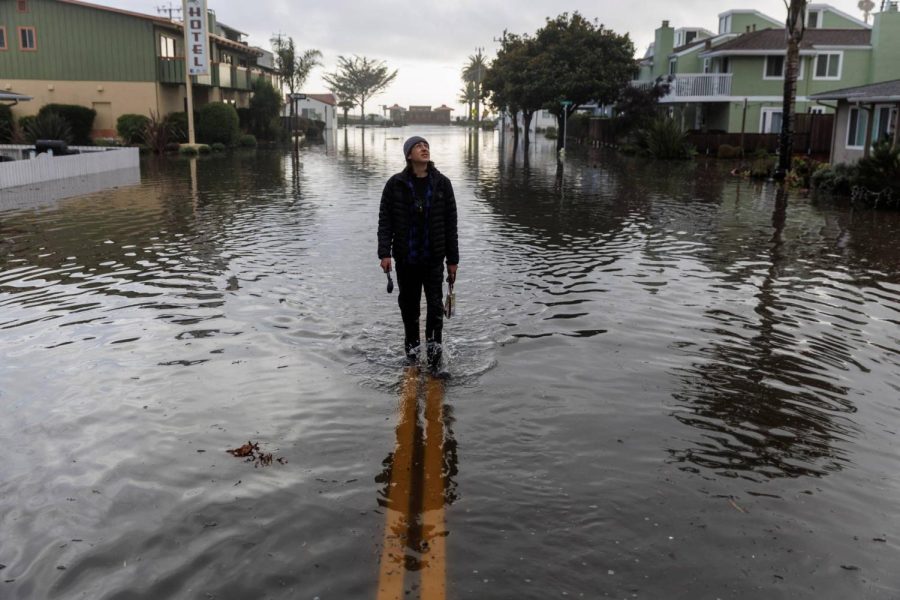Bomb Cyclone Hits California
California is known for its beautiful weather, panoramic views, and always being in a drought. But when it rains, it rains like it’s never rained before. In the last couple of weeks, California had its heaviest 10 day rain period since 1871. The National Weather Services has warned Californians of a “relentless parade of atmospheric rivers”. A lot of people all over California have been affected by these major rain storms in different ways. Streets and highways have been turned into gushing rivers. This is just the beginning of this cyclone as it will continue to wreck California.
California was hit by the bomb cyclone in the first week of January. It disrupted road travel with floods and tore down trees in most areas in California. Most people’s homes were left with no power, and some remain so till this day.
According to NBC News, in Central California, a 5 year old was swept away by floodwaters while on his way back from school. Divers were not able to find him even after a seven-hour long search due to dangerous water levels. Several districts had to close schools and cancel sports activities after most of them just got back from winter break. The governor, Gavin Newsom, said 12 people had been killed as a result of violent weather, and to “just be cautious over the course of the next week…”
The last time California was hit by a bomb Cyclone was a much weaker one in 2017. You may wonder what a bomb cyclone is, and how does it happen? A bomb cyclone is when a mass of low pressure air collides with a mass of higher pressure air. Winds are produced as air moves from areas of high to low pressure. The pressure gradient increases rapidly as a result of the strengthening winds. The earth’s cyclonic effect happens as the winds blow and heavy rain drops.
“The County of Santa Clara has issued evacuation warnings to community members reading in the watershed areas of Uvas Reservoir and Pacheco Pass River Basin below due to the weather conditions and risks to the general public and property”, tweeted the County branch of the Office of Emergency Service.
According to Gerry Diaz from the San Francisco Chronicles, San Francisco and Oakland airports have picked up about seven- tenths of an inch of rainfall, and the wind speed has led to some flights being canceled. The worst of the rain in the Bay Area is in San Francisco and the inner parts of Alameda County.
Many Bay Area creeks filled over the flood stage, such as the Berryessa Creek and Belmont Creek. According to San Francisco chronicles valley water, this is what manages to clean water supplies and flood protection has declared a county wide flood emergency as rain humbled the region and threatened significant overspills of streams and reservoirs.
Cindy Vidal is a student from Wilcox High School in the Santa Clara Unified District. During an interview she was asked how the raining storms from the past weeks have affected her. She answered, “It didn’t really affect me, it was just really scary especially at night when I would be driving. I had to be very cautious because the rain would hit really hard with strong winds”. In the Bay Area the wind speed went up to 80 mph. “Rain can get heavy and dangerous; Although, rain can be very good for the environment since this is the most it has rained in years”, said Vidal.
Leslie Menezeses is a 21 year old mother from Watsonville who was affected by the bomb cyclone. In an interview she said, “It affected my daily life because I couldn’t drive to work since the streets were flooded. I’m a single mother and need the money to maintain my son and I”. Santa Cruz County was the most affected County in Northern California. Leslie quoted, “I’ve never experienced this severe weather in the 21 years of my life”.
California is known as one the of the most beautiful states in the United States for its unique history and panoramics. It is also known for always being in a drought. Although when it rains, it rains like California has never received a drop of water.






